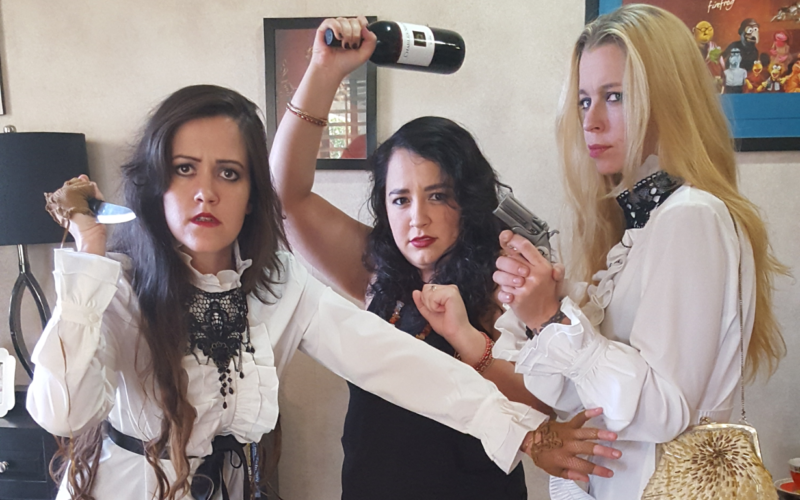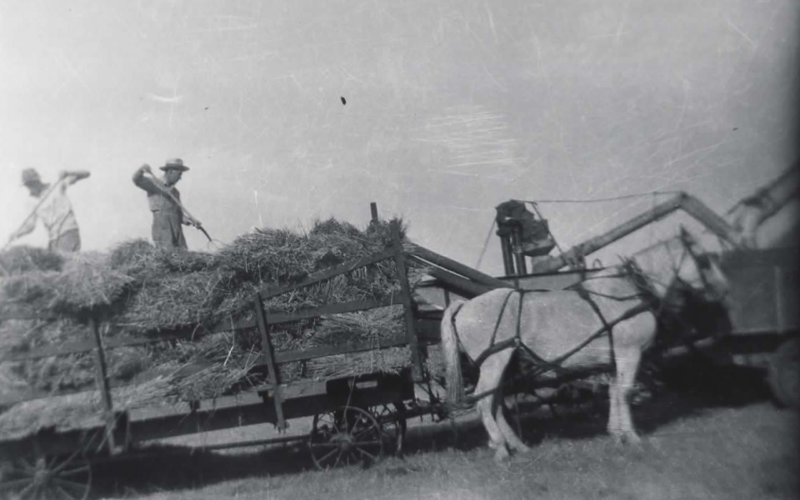
The Vallambrosa Family’s Piano, Chateau de Mores, Medora, ND — Photo by Vaughn Treude
One of the most enjoyable aspects of writing steampunk is the opportunity to use real historical people as characters. Among those featured in my novel Fidelio’s Automata are Antoine and Medora Vallambrosa, a.k.a. the Marquis and Marquise de Mores. They were a “power couple” of the 19th Century, notable figures in the history of my home state. Antoine was a French aristocrat. His wife Medora hailed from a New York banking family. Together they relocated to the Badlands of the Dakota Territory, founding a town named after the Marquise.
The Badlands were (and still are) cattle country. The Marquis built a slaughterhouse and meat-packing plant there at the source. He intended to bypass the beef trust of Chicago. Rather than shipping live cattle, he would ship beef to market in refrigerated boxcars. The venture failed, and the Vallambrosas moved on to French Indochina. The Marquis died in 1896, murdered during a cloak-and-dagger adventure in North Africa. Medora and their three children lived on in France; she died in 1921 at the age of 65. Years later, the Gold Seal Company of North Dakota restored the town of Medora as a tourist attraction. The Vallambrosas’ home, known as the Chateau de Mores, is now a state historical park.
Since steampunk is alternate history, I took the liberty of changing it. In Fidelio’s Automata, the Marquis returned from Indochina to North Dakota to restart the business. Medora was thus a thriving community when Fidelio and Hank arrived in 1901, to seek funding from the Marquis for Fidelio’s automaton.
The Vallambrosas were larger-than-life people. Antoine had a quick temper and fought numerous duels. Medora was the original liberated woman; she rode horseback and hunted big game. While in Dakota, they socialized with future president Theodore Roosevelt, who had taken up ranching there. (The land north of the town of Medora is now a national park which bears Roosevelt’s name.)

The Chateau de Mores, Medora, ND — Photo by Vaughn Treude
In 2012, Arlys and I visited the Chateau. It’s a two-story multi-room house on to of a hill, much like a glorified hunting lodge. Though the state promotes their history, they sanitize it a bit. We noticed a photo of Medora in cowboy garb with a cigarette in hand. Our tour guide was quick to remark that Medora “was not a smoker.” Was that truth or political correctness?

Sitting room with portrait of Medora Vallambrosa — Photo by Vaughn Treude
Another detail you won’t hear about is the Marquis’ activities after the couples’ return to France. He became involved in politics through the Anti-Semitic League, and fought a duel with Jewish politician Ferdinand-Camille Dreyfus, whom he wounded but did not kill. As bad as this sounds, I believe he was mainly an economic nationalist who opposed Jewish banking interests. “Gaul is for the Gauls,” said the Marquis. Dreyfus replied that Vallambrosa was no Frenchman, having a Spanish title and an American wife who was not a Christian. In my research, I couldn’t determine her family’s religion, but if Medora was Jewish, it must have made for some interesting dinner table discussions.
The Vallambrosas were a fascinating couple who were ahead of their time. Their story is another interesting chapter in the history of American West.




































I just love learning about Medora. She hunted and fished. She refused a side saddle. And although the tour guide did say that the cigarette was a planted gimmick at the time. There are other indications that she smoked and drank. I just adore her.